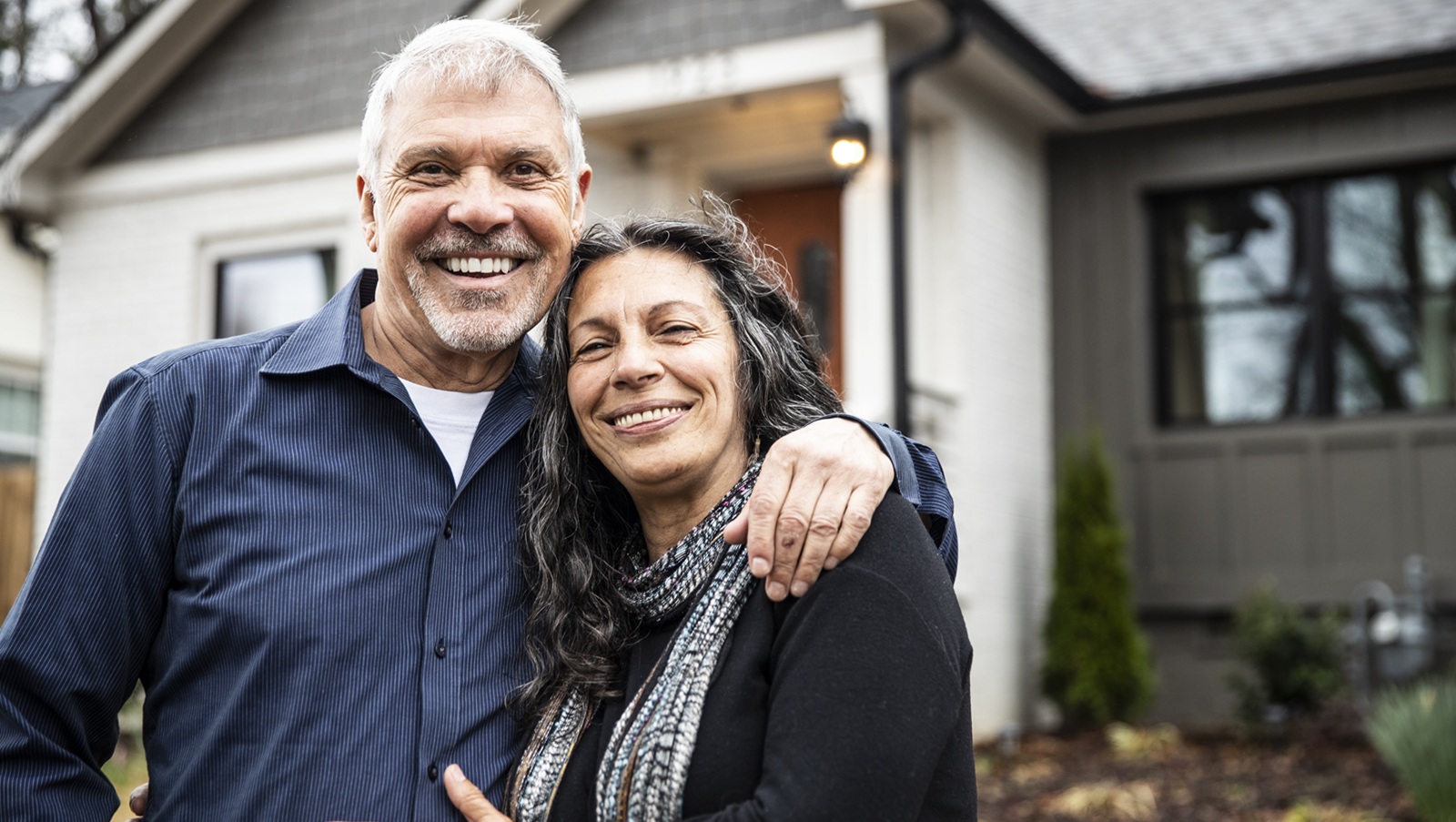Cash Balance Plans: An Expert Guide to the High Earner's Secret Weapon for Retirement
Cash balance plans offer business owners and high-income professionals a powerful way to significantly boost retirement savings and reduce taxes.


For business owners, partners and high-income professionals looking to boost retirement savings and reduce taxes, cash balance plans offer a compelling solution.
They combine the structure of a defined benefit plan with the portability of a 401(k), making them a modern retirement tool with significant advantages.
What is a cash balance plan?
This plan is a tax-qualified retirement strategy that operates much like a traditional pension while maintaining the feel of a 401(k).
From just $107.88 $24.99 for Kiplinger Personal Finance
Become a smarter, better informed investor. Subscribe from just $107.88 $24.99, plus get up to 4 Special Issues

Sign up for Kiplinger’s Free Newsletters
Profit and prosper with the best of expert advice on investing, taxes, retirement, personal finance and more - straight to your e-mail.
Profit and prosper with the best of expert advice - straight to your e-mail.
Each participant has an individual account that grows annually through two components: employer contributions (defined by a formula) and an interest credit usually tied to a specified rate in the plan document.
The Kiplinger Building Wealth program handpicks financial advisers and business owners from around the world to share retirement, estate planning and tax strategies to preserve and grow your wealth. These experts, who never pay for inclusion on the site, include professional wealth managers, fiduciary financial planners, CPAs and lawyers. Most of them have certifications including CFP®, ChFC®, IAR, AIF®, CDFA® and more, and their stellar records can be checked through the SEC or FINRA.
Upon retirement or departure from a job, the account balance can be rolled over into an IRA or another qualified plan.
While the mechanics are based on actuarial formulas, the end-user experience is straightforward: Participants see a clear account balance and can track growth over time, just as they would in a defined-contribution plan.
Why employers choose them
Perhaps the biggest advantage of a cash balance plan is the ability to allocate significantly more than what's allowed in a traditional 401(k) or profit-sharing plan — often more than $250,000 per year for older, high-earning participants.
These contributions are tax-deductible, grow tax-deferred and offer significant potential to reduce corporate or personal tax liability.
Business entities of all types can benefit. Corporations deduct contributions on their corporate tax returns, while partnerships and sole proprietors split the deduction between the business and the owners' personal filings.
The tax savings typically far outweigh the administrative cost of running the plan.
Beyond the tax advantages, these plans are a powerful way to attract, retain and reward key employees, especially in professional services firms such as law, accounting and medical groups.
In addition, assets in a cash balance plan are generally protected from lawsuits and creditors of the employer.
They've grown in popularity outside these industries as well, and the plans are now used by a wide range of businesses to support the larger contributions often made for business owners.
What to know before starting
Cash balance plans require an actuary to manage annual funding calculations, and there's an expectation of permanency; they're not intended as short-term strategies.
Contributions must generally be made every year, and the plan must meet minimum participation rules and nondiscrimination testing.
Consequently, these plans are often paired with a 401(k) and profit-sharing component to help meet those standards.
Staff and nonowner contributions typically fall in the 5% to 7.5% range of pay. The plans also have a lifetime IRS limit on how much an individual can accumulate, and most are covered by the Pension Benefit Guaranty Corporation (PBGC), though some are exempt, depending on structure.
Looking for expert tips to grow and preserve your wealth? Sign up for Building Wealth, our free, twice-weekly newsletter.
Despite these requirements, plan designs can be flexible. Employers can periodically amend contribution levels, option to freeze benefit accruals and have the flexibility of terminating the plan over time.
Who should consider one?
Cash balance plans are ideal for firms in which owners and key employees consistently earn $500,000 or more annually and are seeking to contribute well beyond 401(k) limits.
They're particularly efficient when layered on top of existing retirement programs such as profit-sharing contributions of 3% or more.
Firms of any size can implement a plan, but the more key employees involved and the higher their desired contributions, the more efficient the plan becomes.
Final thoughts
Cash balance plans are a strategic retirement solution for those who want to catch up quickly, lower taxes significantly and reward themselves and key team members in the process.
With the right design and ongoing guidance, these plans can potentially deliver tremendous long-term value that far exceeds their complexity.
For high-income professionals looking for a smarter way to save, the cash balance plan might be a great opportunity.
Related Content
- Got a Cash Balance Pension? Understand Your Options
- Cash Balance Plans: Big Deductions and Big Retirement Savings
- The Pros and Cons of Cash Balance Pension Plans
Profit and prosper with the best of Kiplinger's advice on investing, taxes, retirement, personal finance and much more. Delivered daily. Enter your email in the box and click Sign Me Up.

Jerry serves as Executive Vice President and Head of Retirement at Sentinel Group, where he drives the strategic growth of Retirement Plan Services. Jerry spearheads business development, cultivating partnerships and leading plan consulting to help ensure the financial strength of the business. A forward-thinking leader, Jerry is committed to elevating service quality for clients and partners. By prioritizing compliance, he fosters a culture that values accountability and continuous improvement. Jerry’s dedication to streamlining data-driven solutions helps clients and partners achieve exceptional outcomes and sustainable growth.
-
 Don't Wait Until January: Your Year-End Health Checklist to Kickstart 2026
Don't Wait Until January: Your Year-End Health Checklist to Kickstart 2026Skip the fleeting resolutions and start the new year with a proactive plan to optimize your longevity, cognitive health, and social vitality.
-
 Premium Rewards Cards: More Perks, Higher Fees
Premium Rewards Cards: More Perks, Higher FeesSome issuers are hiking the annual fee on their flagship luxury credit cards by hundreds of dollars. Are they still worth using?
-
 3 Trips to Escape the Winter Doldrums, Including An Epic Cruise
3 Trips to Escape the Winter Doldrums, Including An Epic CruiseThree winter vacation ideas to suit different types of travelers.
-
 Your Year-End Wellness Checklist for a Healthier 2026
Your Year-End Wellness Checklist for a Healthier 2026Skip the fleeting resolutions and start the new year with a proactive plan to optimize your longevity, cognitive health, and social vitality.
-
 3 Trips to Escape the Winter Doldrums, Including An Epic Cruise
3 Trips to Escape the Winter Doldrums, Including An Epic CruiseThree winter vacation ideas to suit different types of travelers.
-
 How to Master the Retirement Income Trinity: Cash Flow, Longevity Risk and Tax Efficiency
How to Master the Retirement Income Trinity: Cash Flow, Longevity Risk and Tax EfficiencyRetirement income planning is essential for your peace of mind — it can help you maintain your lifestyle and ease your worries that you'll run out of money.
-
 I'm an Insurance Expert: Sure, There's Always Tomorrow to Report Your Claim, But Procrastination Could Cost You
I'm an Insurance Expert: Sure, There's Always Tomorrow to Report Your Claim, But Procrastination Could Cost YouThe longer you wait to file an insurance claim, the bigger the problem could get — and the more leverage you're giving your insurer to deny it.
-
 Could a Cash Balance Plan Be Your Key to a Wealthy Retirement?
Could a Cash Balance Plan Be Your Key to a Wealthy Retirement?Cash balance plans have plenty of benefits for small-business owners. For starters, they can supercharge retirement savings and slash taxes. Should you opt in?
-
 Changes Are Coming for This Invesco Bond Fund
Changes Are Coming for This Invesco Bond FundThe Invesco BulletShares 2026 Corporate Bond ETF's bonds will mature in 2026. Here's what investors should do.
-
 What Science Reveals About Money and a Happy Retirement
What Science Reveals About Money and a Happy RetirementWhether you’re still planning or already retired, these research-based insights point the way to your best post-work life.
-
 7 Retirement Planning Trends in 2025: What They Mean for Your Wealth in 2026
7 Retirement Planning Trends in 2025: What They Mean for Your Wealth in 2026From government shutdowns to market swings, the past 12 months have been nothing if not eventful. The key trends can help you improve your own financial plan.